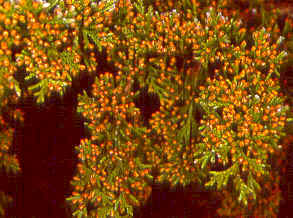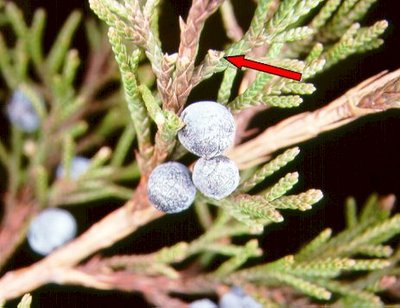Once your birds have become accustomed to eating in your yard, they will develop a certain dependency on you and your garden. When the winter months roll around, natural food will become scarcer. Provide plenty of seed, fruits or suet during these times to keep your feathered friends around your yard, and happy!
When it is at all possible, a water supply should be included into your garden plan. This is easily accomplished by the inclusion of a birdbath, which gives them the water they need and enjoy.
PLANTS WHICH ATTRACT BIRDS:
Flowering Dogwoods
Flowering Dogwoods are one of our most common understory trees. Understory means that it grows beneath taller trees.
This small tree grows about 30 feet tall. Its trunk usually isn't more than eight inches wide. The trunk is also short, with many spreading branches.
Flowering Dogwood leaves grow up to five inches long and 2 1/2 inches wide. They are green with short stalks. Underneath they are pale green.
Flowering Dogwood leaves turn bright red in the Fall.
American Holly
American Holly is a small tree or large shrub which is very easy to identify. It grows up to 60 feet tall, but is usually much smaller.
American Holly leaves are dark green, tough, and leathery. Sometimes they are very shiny. Underneath, they are yellowish-green. Holly leaves have several "prickles" on the edges.
The flowers of American Holly are small and white. They usually bloom from April to June.
American holly is dioecious, meaning there are male plants with only male blossoms, and female plants with only female blossoms. One male can pollenize several females, but berries will not set without pollen from the male. Bees are also required, as wind pollination is negligible.
American holly is often planted as an ornamental plant and is a popular Christmas decoration.
Eastern Red Cedar
There is not much green in the winter landscape of the Great Plains. In fact Kansas has only one native evergreen tree. It is called the Eastern Red Cedar. All other native trees in Kansas lose their foliage in the winter, so they do not provide much shelter from winter weather. Thus the Eastern Red Cedar becomes a vital source of shelter for many birds and mammals when it gets real cold and nasty.

9R

If you take a close look at one in winter, you may notice several things:
If you are looking at a female, you will find little blue balls on the branches. These are the fruits of the tree. Smash one between your fingers and you will notice a pungent odor as well as finding one to four seeds inside. Does this smell like something you would like to eat? If you see any birds eating these berries, you will notice that they don't exactly savor the sauce, but just gobble the little treats down. The seeds pass on through the bird's gut unharmed and are "planted" elsewhere as they move about. This is a typical method that plants use to scatter their seeds. Virtually all the cedars growing in pastures get planted this way.
A careful inspection will reveal the female flowers, which are small spiky structures. In the photo you can see two just above the cluster of berries (red arrow).
If you are looking at a male, you will find tiny tan-colored "pine cones" on the branches. These are the pollen-bearing structures and are about the size of a sesame seed. They will release the pollen near the end of winter. They are one of the first trees to flower every year. When the pollen is flying, you can make a tree "smoke" by gently swatting the branches. (Other male evergreen trees will do this when flowering also.)
No comments:
Post a Comment